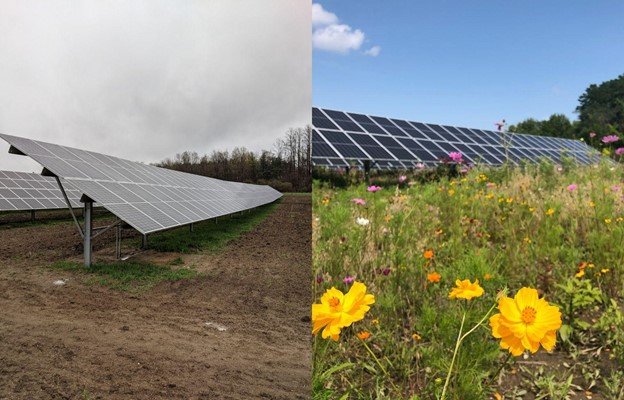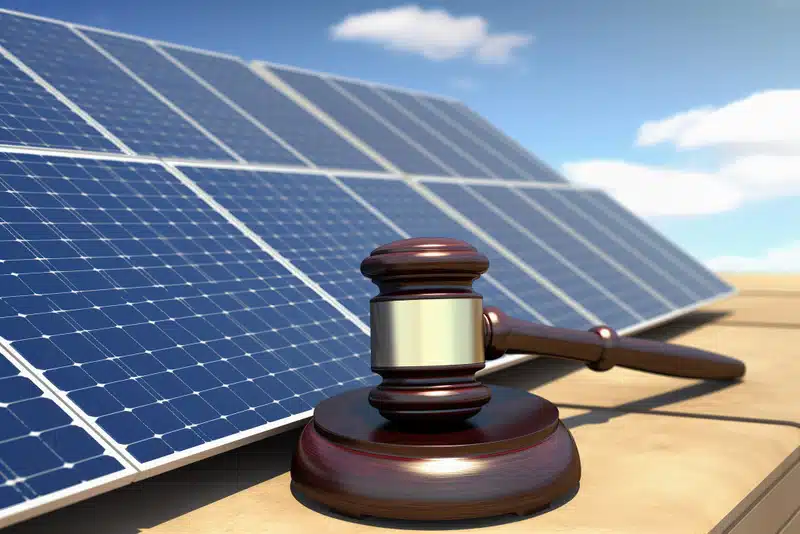Mitigating the impacts from stormwater runoff in solar construction

As we pursue the imminent deployment of solar as part of the energy transition away from fossil fuels, it is important to remember that delivering solar projects at scale requires significant amounts of flat space and, often, land. Every megawatt of ground-mounted solar requires approximately five acres of land.
There are emerging market signals and incentives to meet this demand for solar energy by utilizing large flat rooftops, brownfields, landfills, parking lots, and even large bodies of water, under a concept known as “floatovoltaics.” There are also many opportunities where the land hosting the solar array can support multiple uses from crop production to sheep grazing to apiaries surrounded by pollinator friendly ground cover.
However, the scale of solar deployment required to meet the various state and federal goals for decarbonizing our economy will require that additional open, cleared land be leveraged to support this buildout.
As such, it’s critically important that as our industry scales up, environmental impacts such as stormwater runoff are properly managed both during and after construction.
Regulatory mechanisms
There are a number regulatory mechanisms in place at the federal, state and local level to encourage proper solar site management during active construction. As an example, this past February, Encore’s Amber Lessard and Lilly Kuhn were in the midst of performing a routine, mid-construction site visit for a 3.2 MWdc solar project under construction in Castleton, Vermont when an inspector from the Vermont Department of Environmental Conservation (DEC) arrived at the site to perform a random inspection related to the stormwater pollution prevention controls required by the State of Vermont Construction General Permit 3-9020.
These site visits by the DEC are intentionally unannounced, providing the regulators an opportunity to ensure that all protective measures are in place and that best management practices are being employed to limit the impact of the construction project on the site and its surroundings.
Construction team training
At Encore, we take seriously the minimization of environmental impacts related to the construction of the community-scale solar projects that we deliver to the market and to local host communities. In accordance with this philosophy, Encore’s construction team recently engaged stormwater engineering professionals from VHB to provide our field crews with a stormwater permit compliance training program consisting of both virtual classroom instruction as well as in-person on-site instruction. The objective of the training session was to provide our team with a more robust and detailed understanding of the stormwater regulations that apply to solar projects in Vermont.
Training our field teams on stormwater compliance continues to have immense value.
- It allows our team members to streamline and expedite both regulatory permitting and inspection processes.
- Enacting robust stormwater management practices at Encore’s solar projects is also allowing for more efficient construction timelines by encouraging the construction team to focus on preventing erosion throughout the construction period and mitigating any risk of erosion by properly staging higher traffic construction tasks.
- This approach allows the site to transition to a regrowth period more quickly at the end of construction and facilitates a faster, and thus cheaper, demobilization of construction crews and equipment.
Encore is committed to advancing triple bottom line outcomes for our business and all of our projects. While impacts are often unavoidable, delivering the most environmentally benign projects possible is a core tenet of our philosophy of maximizing positive climate-related impacts of our projects while minimizing our impact on the environment, both during construction activities as well as during the operational life of our projects, as demonstrated by our commitment to deliver all of our projects with either pollinator-friendly ground cover or fossil-fuel free sheep grazing.
As we look to decarbonize our economy and electrify everything in our homes, businesses, institutions and modes of transportation, massive amounts of new clean energy generation will be required, much of it coming from community and utility scale solar. We owe it to the local communities that will host these clean energy projects to deliver it in the most environmentally friendly manner possible and with the greatest ecosystem service value. We are committed to improving underutilized property for clean energy generation and energy storage, helping us to collectively revitalize communities and create a cleaner, brighter future for all.
Sonia Johnson is VP of Construction, Encore Renewable Energy





Comments are closed here.